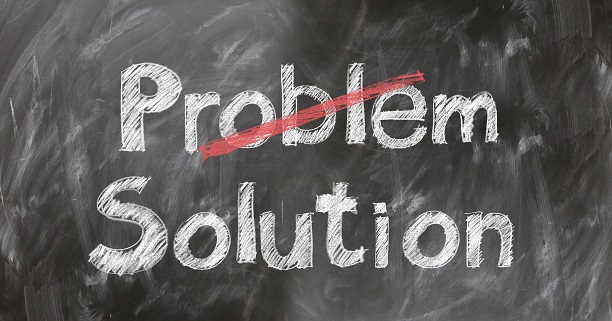A compliance obligations procedure comprises a set of formalized instructions that outline the steps any organization can implement to ensure the identification and fulfilment of compliance obligations.
Compliance obligations that are related to your business’s environmental aspects and the needs and expectations of interested parties need to be documented and understood in terms of risk.
Contents
Compliance obligations will arise from mandatory requirements, and these include for example, applicable laws that require permits and regulations that apply to the environmental aspects of your business’s activities, products and services, and their associated environmental impact.
While voluntary commitments might arise from organizational and industry standards, supply chain relationships, commitments established in contracts and product specifications, principles of good governance, community relations, and ethical standards. Both voluntary and mandatory compliance obligations can result in risks and opportunities to the way you do business.
| Environmental Aspect | Compliance Obligation | Risks | Opportunities | |
| Mandatory | Voluntary | |||
| Use of f-gases in air conditioning units | The Fluorinated Greenhouse Gases Regulations 2009 | Annual sustainability and corporate responsibility reporting | Compliance with emission limits | Restrict hazardous substances in specifications |
| Disposal of waste batteries | Waste Batteries and Accumulators Regulations 2009 | Adopt a community environmental recycling project | Time and resources | Positive publicity |
| Generation of waste | Control of Pollution Act (COPA) 1974 | Agreement to meet a packaging reduction target | Licence/permit compliance and reporting | Increased revenue from waste recovery and recycling approaches |
As such, the compliance obligations procedure describes how the processes needed to comply with the requirements of ISO 14001:2015, Clause 6.1.3 are identified, documented, controlled, and reviewed. What’s more, developing a compliance obligations procedure will allow you to identify areas where you need improvement so that you can start correcting them right away.
Our Compliance Obligations Procedure is proven to work.
The purpose of the compliance obligations procedure is to outline an organization’s methodology for identifying, complying and monitoring obligations which relate to your identified aspects in the context of your operations and product life cycle. The evaluation and review of relevant compliance obligations is often achieved through the provision of access to legal requirement databases and resources.
However, many organizations are unsure about how to put these compliance obligations into place, here we discuss the compliance obligations process in detail. Read on to learn its significance for your organization and the common pitfalls to avoid when implementing this procedure.

Implementing a compliance obligations procedure is critical in ensuring compliance with regulatory requirements. Therefore, it helps reduce the legal risks your business might face in its operations and can help to build a positive brand image.
The following are just some of the many reasons why it makes sense for organizations to develop such procedures:
This video summarizes the meaning and importance of compliance:
https://www.youtube.com/watch?v=xS3LBGtp_Lo
Our Compliance Obligations Procedure is proven to work.
The following are some of the critical elements that should be included in a compliance obligations procedure:

Once you have decided that developing a compliance obligations procedure is the right thing for your organization, you can start working on the following steps:
Identify the internal and external issues that can help or hinder the achievement of the intended outcomes of the environmental management system.
Compliance obligations will include requirements that are mandatory, such as laws and regulations, or those that your organisation has decided to comply with, whether contractually (customers) or voluntarily (environmental policy commitments).
Consideration should be given to compliance obligations that result from the needs and expectations of your interested parties that relate to known environmental aspects. For example, a compliance obligation might arise from a Logistics company’s desire to reduce the use of fossil fuels during its delivery activities.
Compliance obligations will arise from primary environmental aspects associated with:
Once the needs and expectations of interested parties are identified, your organisation should determine which of these should become a compliance obligation that your organisation will manage, going forward.
When doing so, your organisation should consider internal and external issues and compliance obligations, their organisational units, functions, physical boundaries, activities, products and services and their authority and ability to exercise control or influence.
Consider the risks and opportunities when determining which compliance obligations to address. Ensure the process for determining which interested party needs and expectations become compliance obligations is based on an informal assessment of the risks and opportunities presented by not complying.
Your business’s process for identifying compliance obligations may be informal, for example whereby the organisation’s managers discuss the issues and come to a documented consensus on which of your stakeholders’ needs and expectations should be adopted as a compliance obligation. A number of related departments should be consulted before a compliance obligation is adopted and transferred to the compliance obligations register.
Other, more formal methods for identifying compliance obligations might include for example, using qualitative and/or quantitative approaches such as evaluating and prioritising each stakeholder and their requirements (needs and expectations) based on the level of influence the stakeholder has over the organisation.
Following an initial assessment of the stakeholders of your environmental management system, it is suggested that your organisation holds several workshops with relevant functions to review the findings of the initial assessment in order to consolidate the list of interested parties, their known needs and expectations and compliance obligations.
The organisation must update the compliance obligations register when new knowledge is made available and as part of the management review process.
First and foremost, your organization must ensure that, at a minimum, all legal requirements that apply to the work-place are identified and met; and those environmental practices related to significant aspects are incorporated, where necessary, to establish and maintain an environmental management system that effectively supports the implementation of best available techniques.
Compliance obligations include legal requirements, for example to obtain permits, and those the organisation has voluntarily adopted. The latter may include expectations which have been established without being formalised, for example regular meetings or correspondence with a neighbour or community group.
In order to document and implement your organization's compliance obligations, you should create a compliance obligations register (ISO 14001:2015) or update an existing Legal and Other Requirements register (ISO 14001:2004), where available to take into account the additional compliance obligations.
The Environment & Sustainability Manager should assess all relevant legislation and related legal requirements, regulations and Approved Codes of Practice (ACoPs) using http://www.legislation.gov.uk to ensure that all identified environmental aspects and stakeholder environmental needs and expectations are evaluated and understood in terms of current legislation, including as appropriate:
In order to document your organization’s compliance obligations, you should maintain an electronic spreadsheet or table comprising an indexed list of relevant legal requirements, and other obligations.
Other obligations might include standards and procedures in connection with operational tasks and associated hazards by referencing the minimum acceptable legal, industry standards and technical specifications against the associated equipment and operating routines at your facility.
Information in the Compliance Obligations register for each requirement includes but is not limited to:
The compliance obligations register must be reviewed and updated for adequacy, both for new regulations and updated regulations, on a quarterly basis and communicated to relevant staff whose responsibilities or actions can affect compliance.
The introduction of new legislation, changes to existing legislation, or new government agendas, charters or policies, are monitored by the Environmental and Sustainability Manager.
Those that are of particular relevance and importance to your organization are then cascaded to relevant employees as quickly as practicable. It is often the responsibility of the Environmental and Sustainability Manager to review the Compliance Obligations Register, specifically to:
After you have made the changes required to bring your organization into compliance, it is crucial that your employees are aware of their role in maintaining compliance (e.g., to ISO 14001). This will help to ensure that compliance obligations are effectively cascaded throughout the organization.
An organisation, in addition to evaluating the fulfilment of its compliance obligations, is also expected to maintain a knowledge and understanding of its compliance status. Evaluating performance includes evaluating the fulfilment of compliance obligations.
With reference to the evaluation of compliance, organizations have to set up a process that will involve the determination of the frequency of the evaluation, the execution of the evaluation and the actions that need to be taken.
If during a compliance evaluation, a failure to fulfill a compliance obligation is identified, the organization needs to take action to achieve compliance. This may require getting in contact with a regulatory agency to agree the action. Once that agreement is in place, it becomes another compliance obligation.
As per ISO 14001:2015, Clause 9.1.2, an understanding of the organisation’s compliance status must be demonstrated. Therefore, your organization must have the means, via inspections, tests, and audits, that are frequent and robust enough to ensure that the knowledge and understanding of compliance status is maintained.
The management review meeting attendees ensure that applicable environmental aspects are identified and are understood in terms of stakeholder requirements and current legislation. It is the responsibility of the Environment and Sustainability Manager to maintain and review the Compliance Obligations Register, specifically to determine:
Maintain your compliance obligations procedures by performing periodic reviews, updating them as necessary, and documenting all changes made during each assessment.
An excellent way to make sure you’re on track is to regularly discuss the progress of your compliance obligations with your management team. This will help prevent problems from occurring later on due to inadequate understanding of the process among senior managers.

Evaluating performance includes evaluating the fulfilment of compliance obligations.
Perform regular audits to make sure the process is implemented correctly. An organisation, in addition to evaluating the fulfilment of its compliance obligations, is also expected to maintain a knowledge and understanding of its compliance status.
Auditing helps you ensure that your management team executes the process according to how it was initially designed and enables you to perform necessary adjustments as changes occur within your organization.
The compliance audit frequency is reduced when repeat compliance audits find zero non-compliances.
Where additional legal requirements are identified when the list of legal requirements is reviewed by the compliance auditor, these are reviewed and considered by Top management.
Nonconformities resulting from the legal compliance audits are recorded, actioned and tracked according to your Nonconformity & Corrective Action Procedure.
Develop a training plan for all employees who will be involved in implementing the process.
Personnel who require knowledge of relevant legislative requirements and regulations to undertake their work, should be trained and updated as required. Encourages workers’ membership of organizations that promote awareness and training on safety topics.
The legal compliance audits should be conducted by competent, in-house personnel or a qualified, independent third party. Competent personnel/third parties must hold a minimum of 2 years on-the-job-training or an equivalent combination of training and formal education in environmental law and legal compliance.
The statutory inspection of equipment should be undertaken by competent person(s) in order to fulfil the legal requirements, e.g., the annual thorough examination of an item of lifting equipment.
To ensure that adequate impact management competency levels are achieved and maintained, your organization should provide regular training courses in the impact management process and its application.
There should be both written and oral training requirements that ensure each employee fully understands their role and what is expected of them to complete tasks efficiently and effectively.
Communications concerning changes in compliance obligations may be in the form of an email, link or article provided on the intranet, dissemination through working groups, or articles in the company newsletter or other internal publications. Awareness of and compliance with legal obligations is evaluated by one or more of the following:
Develop incentives that encourage managers to monitor and enforce management responsibilities throughout the organization
This can be done by establishing an incentive system that rewards managers for implementing and enforcing requirements within the organization. This will help ensure that employees understand what is expected of them and that managers are held accountable for maintaining compliance.
Our Compliance Obligations Procedure is proven to work.
A compliance obligations procedure is the best way to ensure your company stays out of legal and ethical trouble. It helps you to avoid making costly mistakes, since it helps define how employees should behave in certain situations, what items need to be reported when they are found, who approves for projects or procedures, and more.
By following the steps listed above, you can ensure your compliance obligations procedure is up-to-date and in good shape.
Updated: 5th April 2022
Author: Richard Keen

Richard is our Compliance Director, responsible for content & product development.
But most importantly he is ISO's biggest fanboy and a true evangelist of the standards.
Learn more about Richard

Don’t Try to Manage It All Alone!
Our ISO Auditors and Quality Manager Trainers have been in this industry for years, and since 2002 we’ve been providing thousands of small businesses and large corporations with the tools they need to get certified.
Instead of trying to create everything you need to follow this process from scratch, use ours. We have procedures, templates, checklists, process maps, forms and gap analysis tools to help you control your documented information without missing a single input or output.
Before you invest all the hours reinventing the wheel, before you spend countless dollars outsourcing the task — try our templates.
| QMS ISO 9001 |
EMS ISO 14001 |
OH&S ISO 45001 |
|
|
Compliance Obligations Procedure The purpose of this procedure is to outline your organization’s methodology for identifying, complying and monitoring environmental obligations which relate to our identified aspects in the context of our operations and product life cycle. Forms & Reports also included:
>> Free Download - Control of Calibrated Equipment Procedure - this will give you a good idea of what to expect when you purchase the procedure. |
|
$19 USD |
|
Pay by Credit Card, Debit Card, PayPal or Apple Pay.


|
Please read our Money Back Guarantee. |
Bought by Small Businesses and Large Corporations our templates have been sold online and CD since 2002.
Used by:
The Templates are used by first-timers following our step-by-step, clause-by-clause guidance documents; and experienced Quality Managers wishing to streamline and improve their existing documentation.
The application of our templates and quality manuals is scalable and generic; regardless of the size and type of organization. The elements that form the environmental management system are the same.
1. Our customizable templates save you time and money by offering a streamlined process to create your quality documentation
2. They’ve got everything you need in one simple template
3. Proven to work our templates have helped thousands of businesses big and small achieve certification
4. Documents use styles to make reformatting and rebranding a breeze
5. Our templates are generalizable for any industry or sector. The application of our templates is scalable and generic; regardless of the size and type of organization.